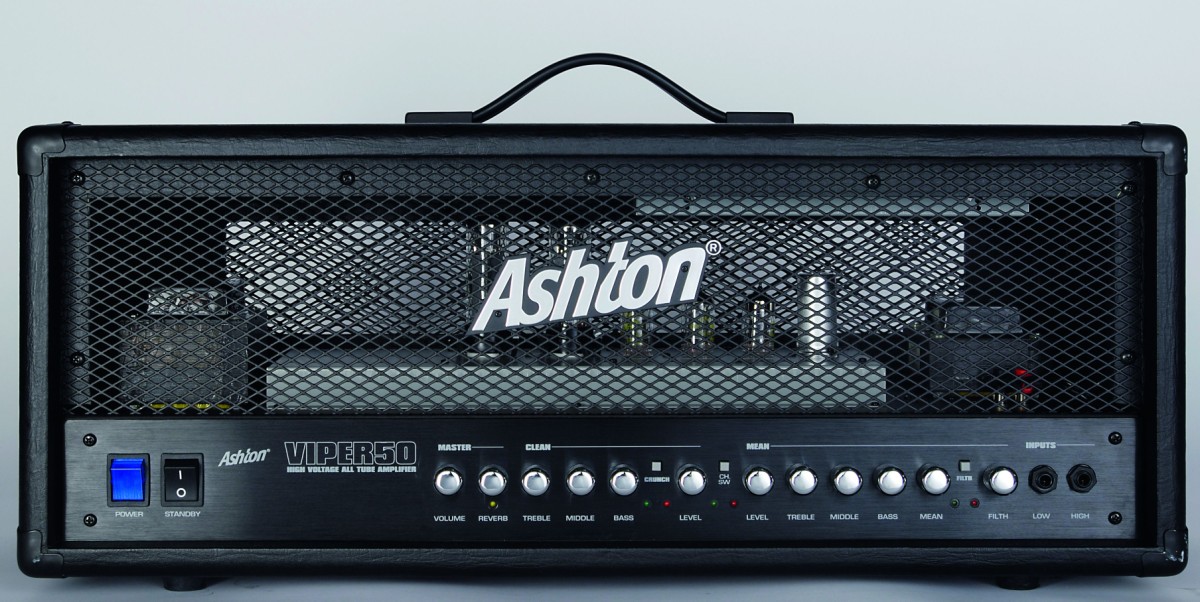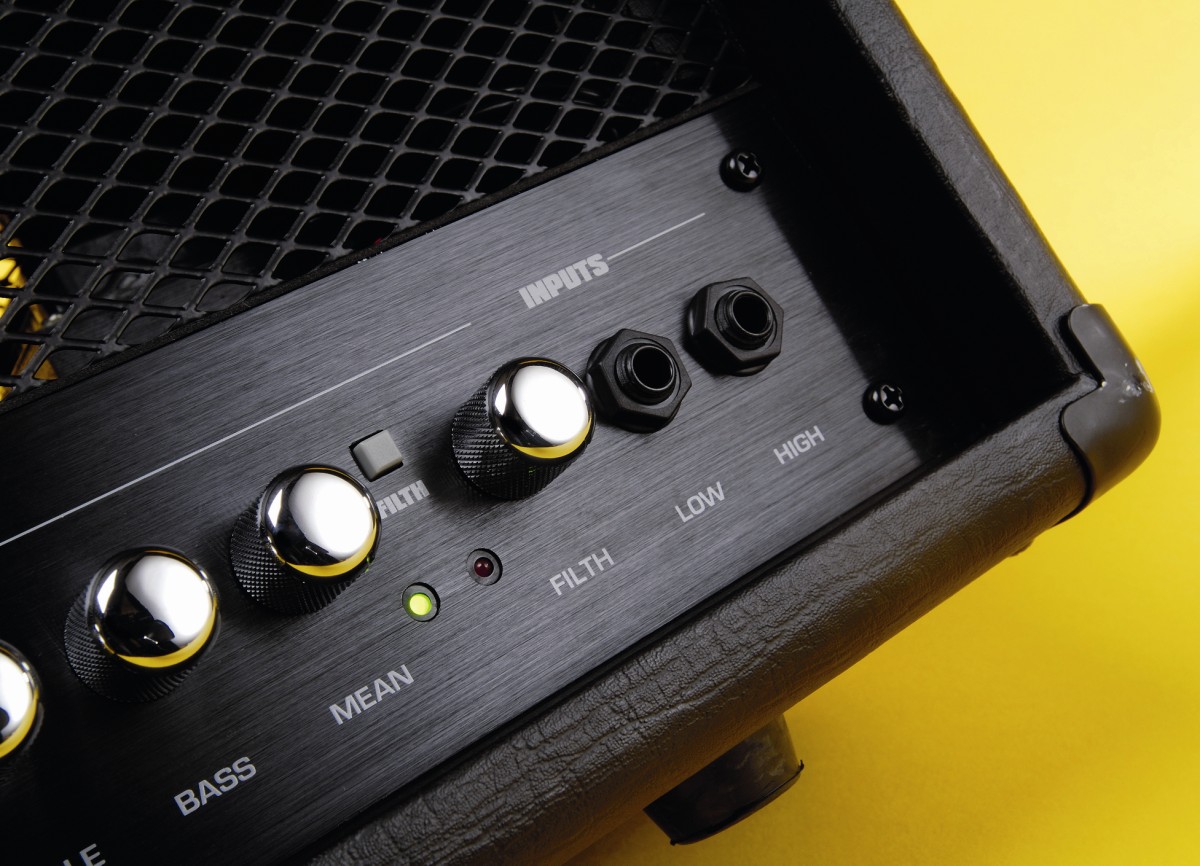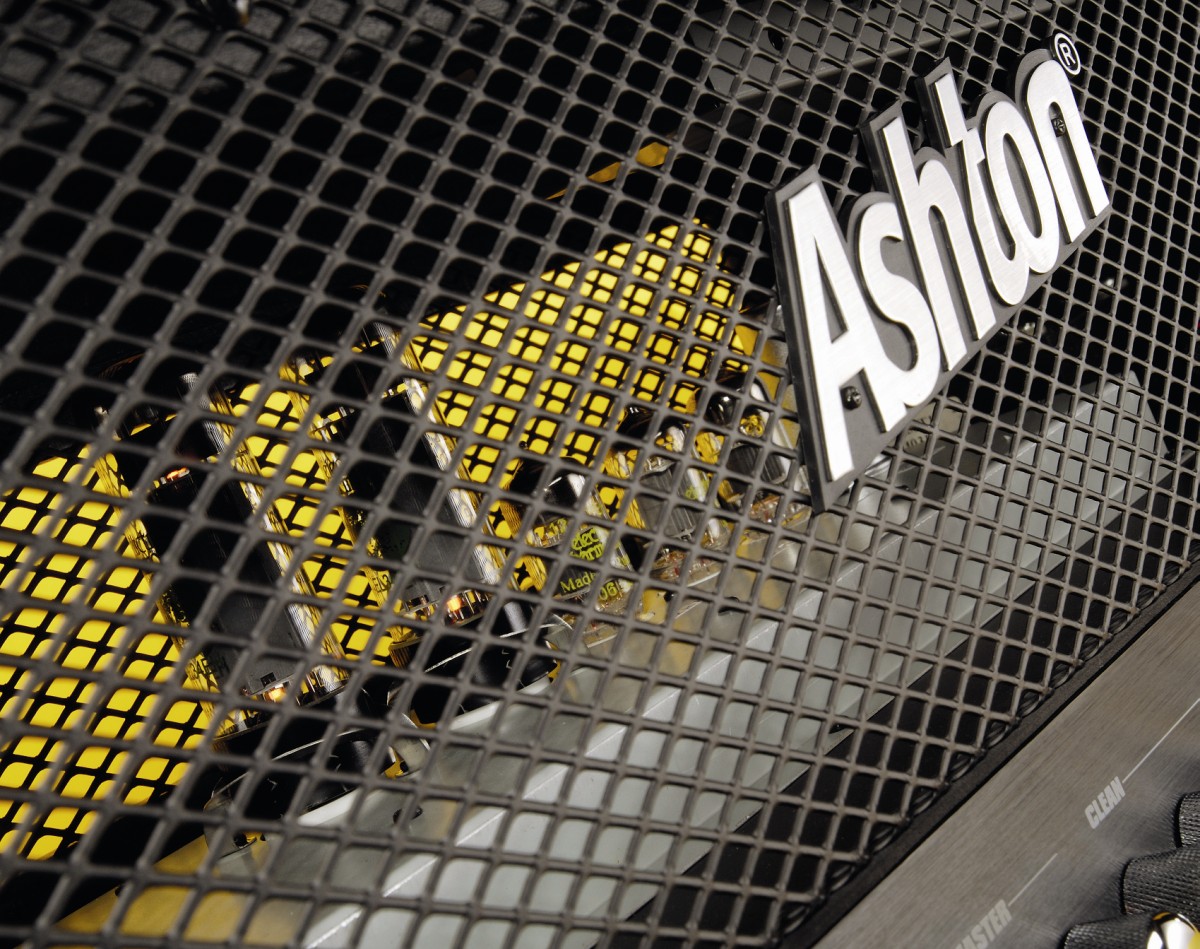MusicRadar Verdict
A decent all-valve head for a great price. It's a good amp for rockers, though some may be disappointed that the Filth mode doesn't really do what you'd want it to.
Pros
- +
Sound switching versatility. Inexpensive for an all-valve amp. Good range of overdriven sounds.
Cons
- -
Footswitch not included.
MusicRadar's got your back

Ashton VP50H Valve Head

Ashton VP50H Valve Head

Ashton VP50H Valve Head
Ashton Music is a diverse manufacturer that enjoys a bigger profile in its native Australia than in the UK, but the brand is trying to make inroads.
This is particularly the case with its amplification line, that includes the all-valve Viper 50 head offered here. It's designed in Australia but Chinese-manufactured.
Hands on
At first glance the 50-watt Viper is a rather unremarkable beast - the styling theme seems to be black, and lots of it.
The cabinet, brushed-metal control surface and metal grate showing off the valves are all a dull black colour, combining to make the amp look a bit 80s, but in a good way.
The only dashes of colour comes in the form of the chromed metal control knobs and the nice touch of a blue LED inside the power button.
The controls are rather uniquely named, with the usual Bass, Clean, Crunch, Master Volume, Middle, Reverb and Treble joined by a Filth knob, Filth Switch and Mean Level.
The channels and distortion modes (Filth, Crunch and Mean) are switchable through a separate footswitch that isn't supplied.
Sounds
The VP50 will provide a certain level of sonic versatility purely because it can be paired with your choice of speaker cabs.
A nice closed-back 4 x 12 would be great for the bottom end, while 10-inch speakers could provide a brighter and tighter option.
Speaker cab aside though, versatility is provided by the mode switches on each channel.
Engaging the crunch switch brings in a mid-range boost and a touch more drive not dissimilar to winding up the amp's front end with a Tube Screamer or similar.
The result is an extra touch of raunchiness ideal for cranking out rock rhythms.
Switching to the mean channel you start off from where that crunch sound finished and add on the overdrive for a more powerful lead sound with plenty of sustain and a richer harmonic content.
It never quite gets into the high gain territory though as that's, according to the manual, the province of the Filth mode.
Switching to Filth mode, however, is something of a disappointment as it exhibits no more than a small increase in gain or distortion over the standard mean channel.
What it does offer, though, is the chance to have two footswitchable sounds with differing amounts of gain available in the mean channel.
By having the mean knob set to, say, about two o'clock and the filth knob right up you can switch from one distorted sound to one that's much more full-on.
For gigging guitarists this pretty much makes the footswitch more essential than optional, giving easy underfoot gradation through the sounds with careful juxtaposition of the mean, filth and level knobs.
As the footswitches provide much of the versatility needed for live use it's a shame that they're not included - most players who buy these amps will want it, so why not include it?
Conclusion
The Venom 50 provides a solid entry-level route into true valve amplification, particularly for anyone playing rock or blues.
With the addition of a decent speaker cabinet, it could provide inexperienced giggers with a rehearsal room-filling sound, although it's obviously not suited to bedroom practice.
The range of choices in amplification is wider now than ever, with digital modelling and solid-state amps providing most of the lower cost options.
But there is still a certain cachet to owning an all-valve amp and this provides the opportunity to do just that at a price point that few will find intimidating.
What you're getting here is a true all-valve amps that provides organic valve-driven overdrive and responsiveness for a similar price to amps that do solid-state emulations of the valve sound.
If you're on a very tight budget but must have an all-valve amp then the Ashton range should be on your radar.
Guitarist is the longest established UK guitar magazine, offering gear reviews, artist interviews, techniques lessons and loads more, in print, on tablet and on smartphones Digital: http://bit.ly/GuitaristiOS If you love guitars, you'll love Guitarist. Find us in print, on Newsstand for iPad, iPhone and other digital readers
“I used everything I knew about music”: How Green Day exceeded expectations with their most ambitious song
YouTube just added AI tools that makes musicians, library music and video editors redundant
“Every one of them said yes without hesitation": Hank Marvin and Roger Taylor have just remade a '60s classic for charity










